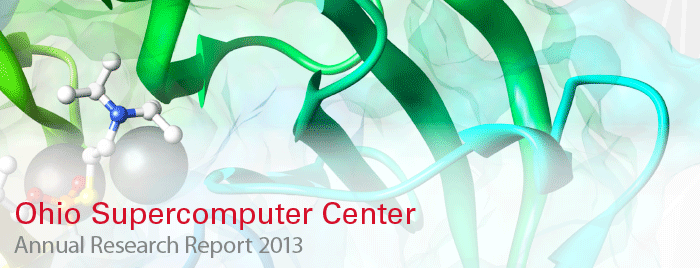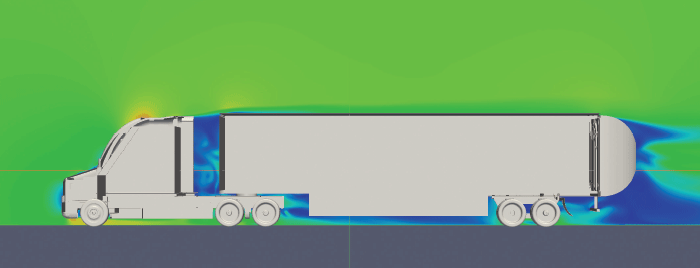A screen shot of simulation results from an app developed by TotalSim LLC as a virtual desktop-as-a-service system for advanced manufacturing processes.
A research team recently sought to transform how professionals and students make and learn about advanced manufacturing components through a “simulation-as-a-service” app based on cloud resources and software access. Their application allows users to remotely access software and compute resources using a virtual desktop-as-a-service system for advanced manufacturing processes.
Prasad Calyam, an assistant professor of Computer Science at the University of Missouri, led a team of specialists from the Ohio Supercomputer Center, the Ohio Academic Resources Network (OARnet), The Ohio State University, the City of Dublin, Ohio, and Metro Data Center (MDC), in partnership with TotalSim, VMware and HP.
Dublin operates DubLink, a 96-strand fiber-optic data network that connects directly to MDC, a regional high-tier data center in Dublin, and to OARnet, Ohio’s 100 Gigabit per second statewide research and education network backbone. TotalSim, a computational fluid dynamics design firm, has partnered with OSC on multiple projects to help small and mid-sized businesses engage in modeling and simulation.
“The service allows for better real-time collaboration between TotalSim’s expertise and the customers, allowing more rapid iterations between user feedback and revised simulations,” explained Calyam. “This decreased time is thanks to the fact that large simulation data-sets are moved only across OARnet and DubLink, and the integrated, secure provisioning of desktop applications (such as Paraview and Microsoft Word) and cloud applications (such as WebEx and Box.net) in the simulation-as-a-service app. External users view the results through a thin-client connection to a virtual desktop, but the large data sets and provisioned applications never leave the cloud.”
The team presented their work at the Next Generation Application Summit in June, and won an award for the “Best Application for Advanced Manufacturing.” The challenge was sponsored by Mozilla Foundation and is part of the nonprofit US Ignite initiative, funded partly by the National Science Foundation.
To demonstrate the application, the research team featured the Truck Add-on Predictor, a computational tool that allows suppliers to model the airflow over a joint vehicle/trailer body and the corresponding aerodynamic forces. By understanding these elements, designers can reduce the weight of key structural components or replace them with other materials, while potentially increasing aerodynamic efficiency. The predictor was developed through the Department of Energy’s Lightweight Automotive Materials Program (LAMP), a partnership between the National Center for Manufacturing Sciences, OSC, TotalSim, Nimbis Services and SimaFore.
Project Lead: Prasad Calyam, University of Missouri
Research Title: Simulation-as-a-Service for advanced manufacturing
Funding Source: U.S. Department of Energy

